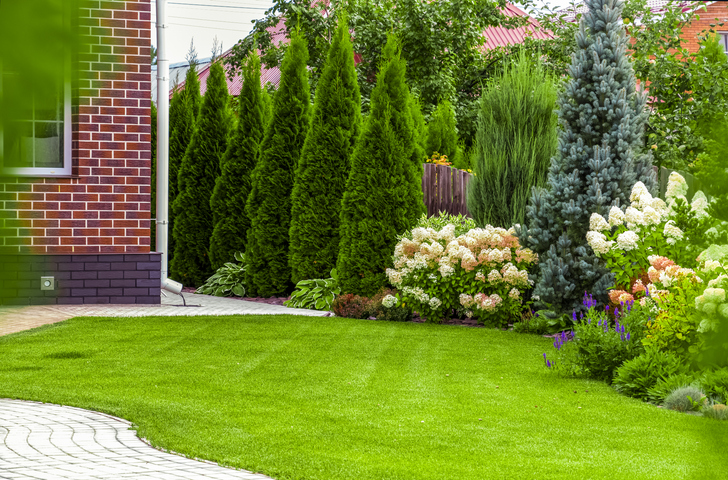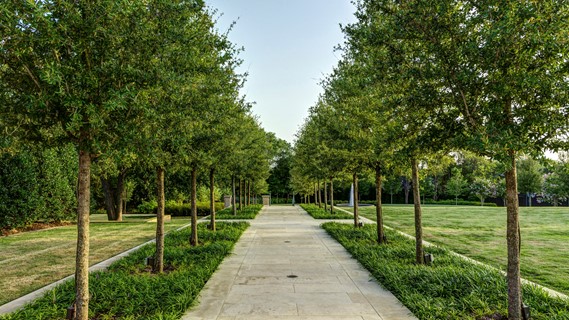Top Guidelines Of Hilton Head Landscapes
Top Guidelines Of Hilton Head Landscapes
Blog Article
Hilton Head Landscapes Can Be Fun For Anyone
Table of Contents5 Simple Techniques For Hilton Head LandscapesHilton Head Landscapes Can Be Fun For AnyoneSome Known Questions About Hilton Head Landscapes.The 9-Minute Rule for Hilton Head Landscapes8 Easy Facts About Hilton Head Landscapes ExplainedAll about Hilton Head LandscapesSome Of Hilton Head LandscapesThe Greatest Guide To Hilton Head Landscapes
Type compatibility is also a major part of unity in designone or two strikingly different kinds are great for contrast and focus, but generally all other kinds need to have some resemblances for a combined look. Texture refers to exactly how rugged or fine the surface of the plant or hardscape product feels and/or looks.
Examples of plants with crude structure consist of philodendrons, agaves, bromeliads, hollies, palms, and hydrangeas. Hardscape with crude structure includes rough-cut stone, rough-finished block, and unfinished timber with knots and an elevated grain. Matured or old building material that preserves a weather-beaten surface area is commonly rugged in appearance. Attributes that develop great structure include small foliage; slim, strappy fallen leaves (lawns) or tall, thin stems; tiny, dense twigs and tiny branches; long stems (creeping plants); and tiny, delicate blossoms.
Our Hilton Head Landscapes PDFs
Most plants are moderate texture, because they can not be called having either rugged or fine structure. They are defined by medium-sized leaves with basic shapes and smooth edges. The average-sized branches are not largely spaced neither extensively spaced, and the overall kind is commonly rounded or mounding. Medium-textured plants function as a history to web link and merge the rugged- and fine-textured plants.

To make a space really feel smaller, position the rugged structures along the external boundary and the fine textures closest to the viewer. The information of the coarse texture makes the plants appear closer and makes the area really feel smaller sized. The perceived texture of plants can also transform with the range from the plant.
Little Known Questions About Hilton Head Landscapes.
Vibrant shades enhance the comparison and make the structure appear coarser, while low-key shades can squash texture. Hardscape with a crude texturesuch as very harsh rocks and vibrant, large timberstends to make all plant material show up extra average distinctive. Designers commonly develop an appearance research study (Figure 8) theoretically to help make a decision the plan of plant materials.
Figure 8. Appearance research study. Shade in plant material and hardscape includes interest and selection to the landscape. Color is one of the most noticeable component in the landscape and is typically the focus of the majority of house owners; however, it is also one of the most short-term component, typically lasting only a few weeks a year for specific plants.
A Biased View of Hilton Head Landscapes
A simple description of the color wheel includes the three main colors of red, blue, and yellow; the 3 additional shades (a mix of two primaries) of environment-friendly, orange, and violet; and six tertiary shades (a mix of one surrounding main and secondary shade), such as red-orange. Shade theory describes the partnership of colors to each other and exactly how they should be used in a make-up.

Analogous (often called unified) shade plans are any type of 3 to 5 colors that are nearby on the shade wheel, such as red, red-orange, orange, yellow-orange, and yellow, or blue, blue-violet, and violet (landscaping hilton head sc). The colors relate per various other due to the fact that they generally consist of two main colors blended to create a second and 2 tertiary colors, which implies they share typical homes
They have a tendency to have high contrast between them. One of the most usual collections are violet and yellow, red and green, and blue and orange. Corresponding shades are typically discovered naturally in flowers; a common pair is yellow and violet. Color is located in the blossoms, vegetation, bark, and fruit of plants.
The smart Trick of Hilton Head Landscapes That Nobody is Discussing
Environment-friendly vegetation in all its various tones is the dominant color by quantity, yet other check this site out colors capture interest quicker as a result of their high contrast to the shade green. Color is additionally found in structures, rocks, pavers, wood, and furniture. A lot of shades in natural materials, such as stone and timber, are typically soft and often tend to be variations of brownish, tan, and pale yellow.
Colors have homes that can influence feelings, spatial understanding, light high quality, equilibrium, and focus. Great shades tend to be soothing and ought to be utilized in locations for leisure and calmness.
More About Hilton Head Landscapes
Cool shades have a tendency to recede and are viewed as being further away, making a space really feel larger. Shade can likewise be used to catch focus and direct sights.
Bright yellow, which has the greatest strength, also has a high comparison with all other colors (commonly described as a "pop" of shade) and must be used moderately. A percentage of intense color has as much aesthetic weight as a huge amount of a more suppressed or weak color.
Analogous (often called harmonious) shade systems are any three to 5 shades that are adjacent on the color wheel, such as red, red-orange, orange, yellow-orange, and yellow, or blue, blue-violet, and violet. The colors relate to every various other due to the fact that they normally consist of 2 primary colors blended to create a second and two tertiary colors, which suggests they share usual residential properties.
Little Known Facts About Hilton Head Landscapes.
Complementary shades are usually discovered naturally in blossoms; a typical pair is yellow and violet. Shade is discovered in the flowers, foliage, bark, and fruit of plants.
Eco-friendly vegetation in all its different shades is the leading color by amount, but various other colors capture focus quicker as a result of their high contrast to the color eco-friendly - bluffton landscaping - https://businesslistingplus.com/profile/h1tnhdlndscps/. Color is likewise found in buildings, rocks, pavers, timber, and furniture. The majority of colors in natural products, such as rock and wood, are typically low-key and tend to be variations of brown, tan, and light yellow
The Facts About Hilton Head Landscapes Uncovered
Shades have properties that can affect emotions, spatial understanding, light high quality, balance, and focus. Trendy shades often tend to be relaxing and need to be made use of in locations for leisure and serenity.
Cool shades often tend to decline and are perceived as being farther away, making a room really feel larger. Color can additionally be utilized to catch attention and straight sights - https://www.artstation.com/stevengonzales53/profile.
As an example, brilliant yellow, which has the highest strength, additionally has a high comparison with all other shades (often referred to as a "pop" of shade) and must be conserved. A small quantity of intense shade has as much visual weight as a large amount of an extra controlled or weak color.
Report this page